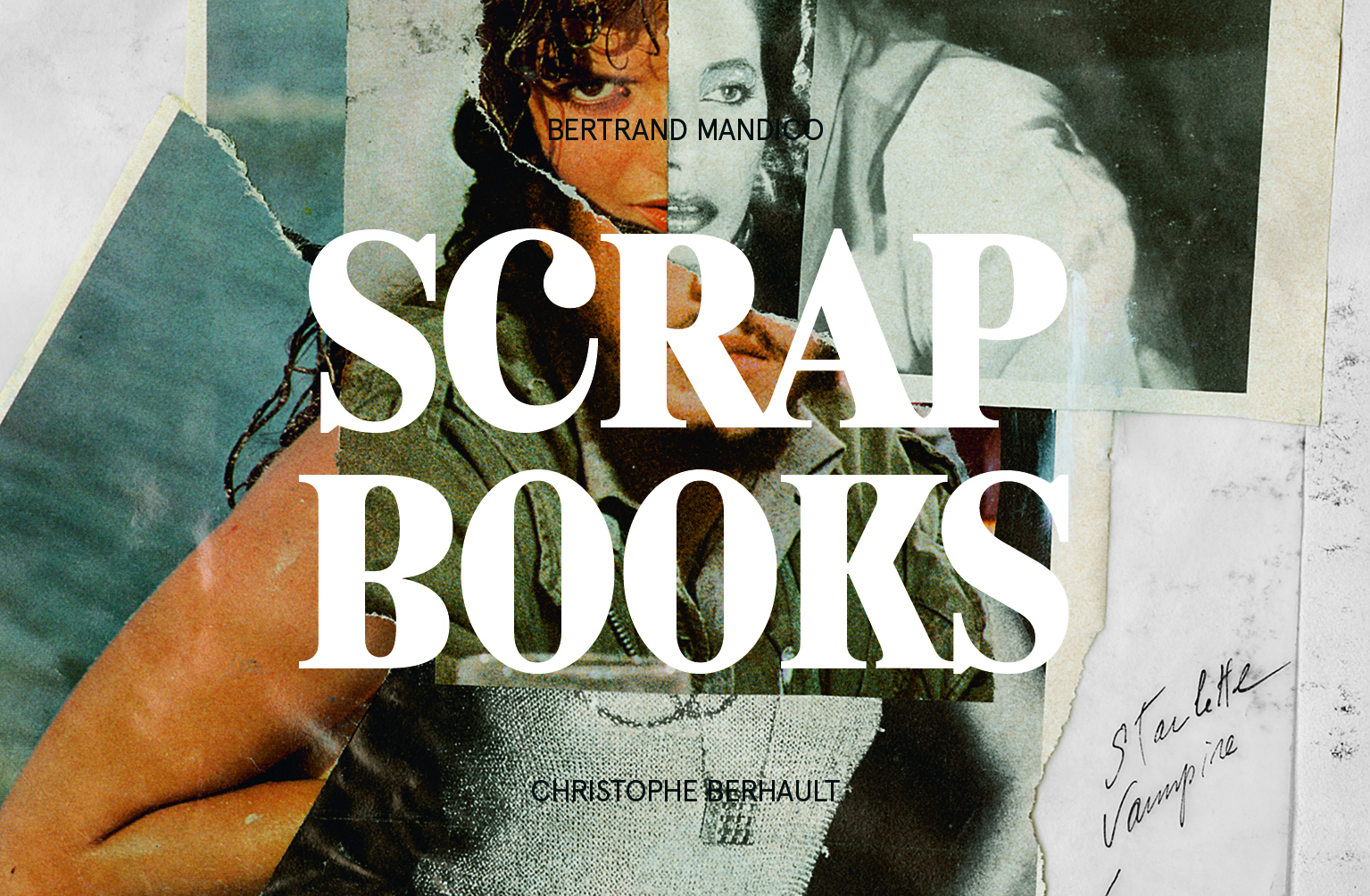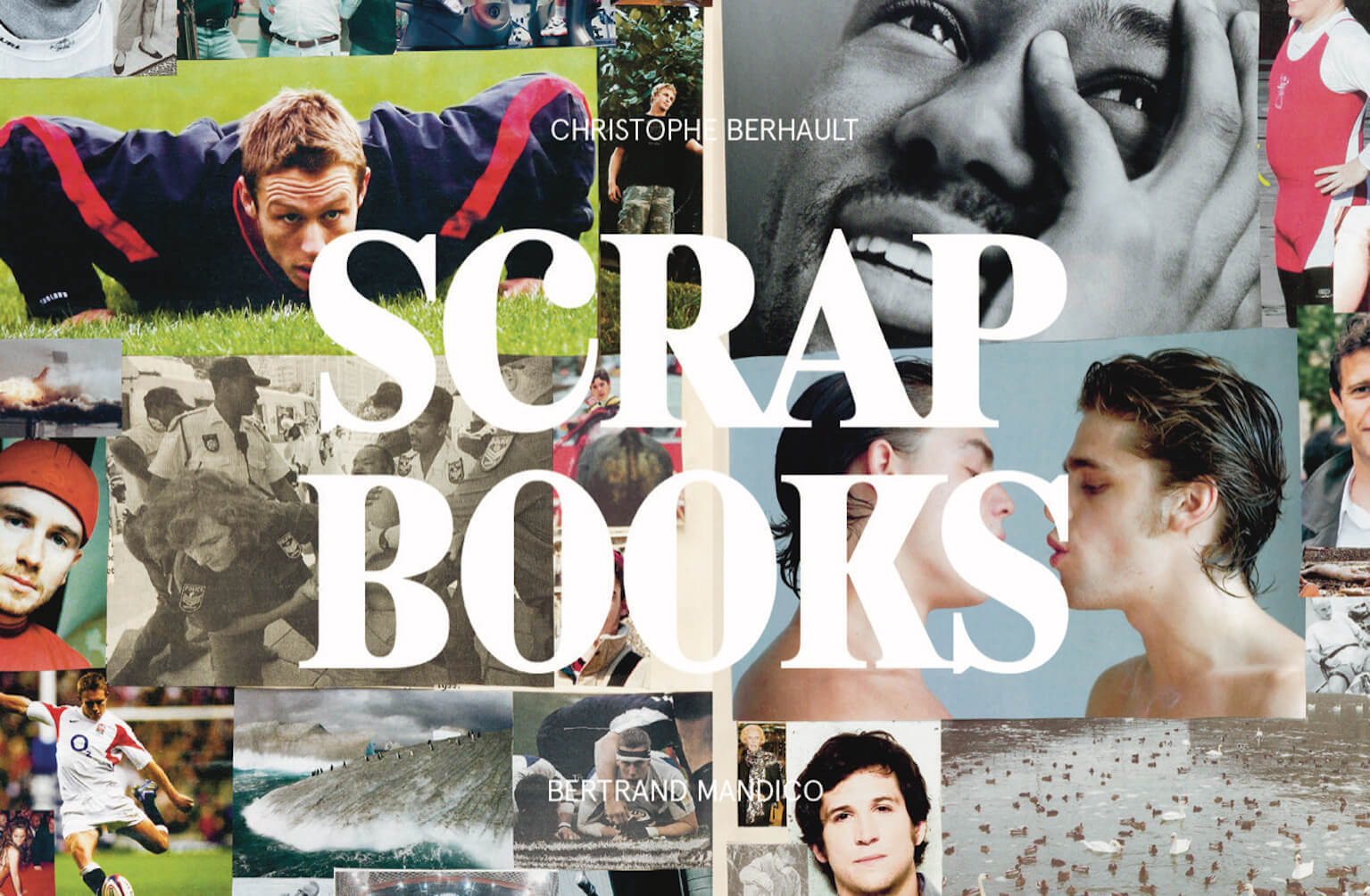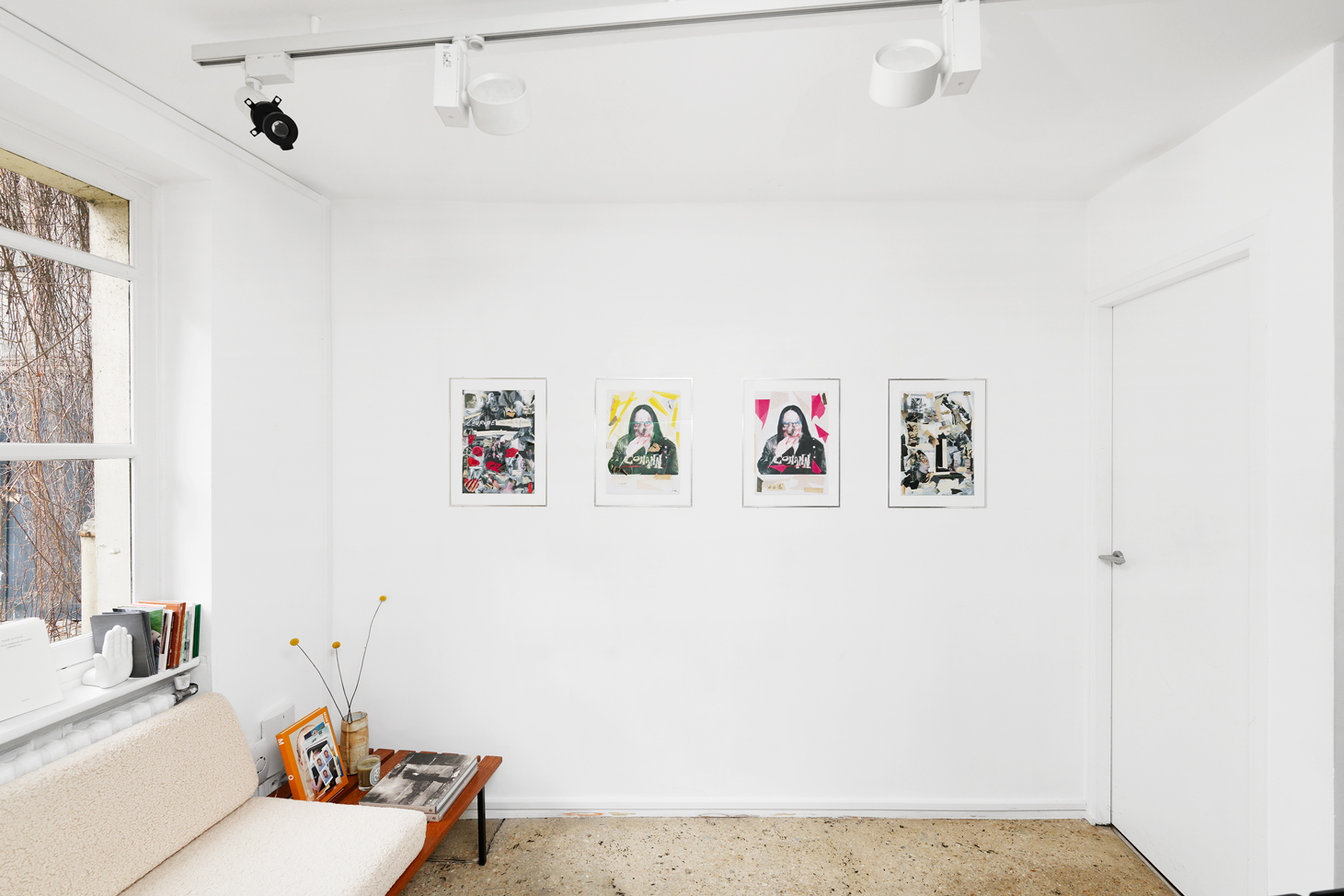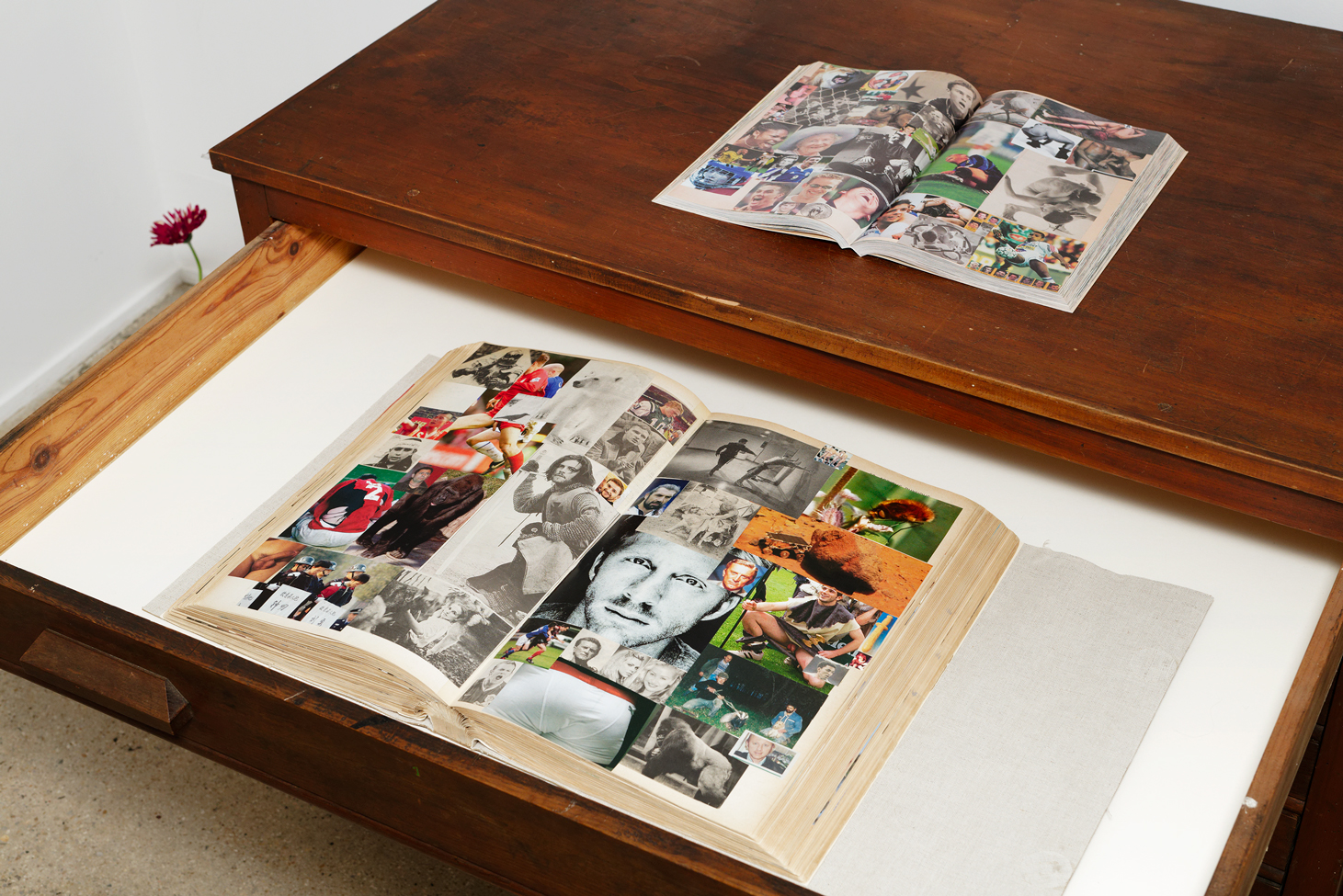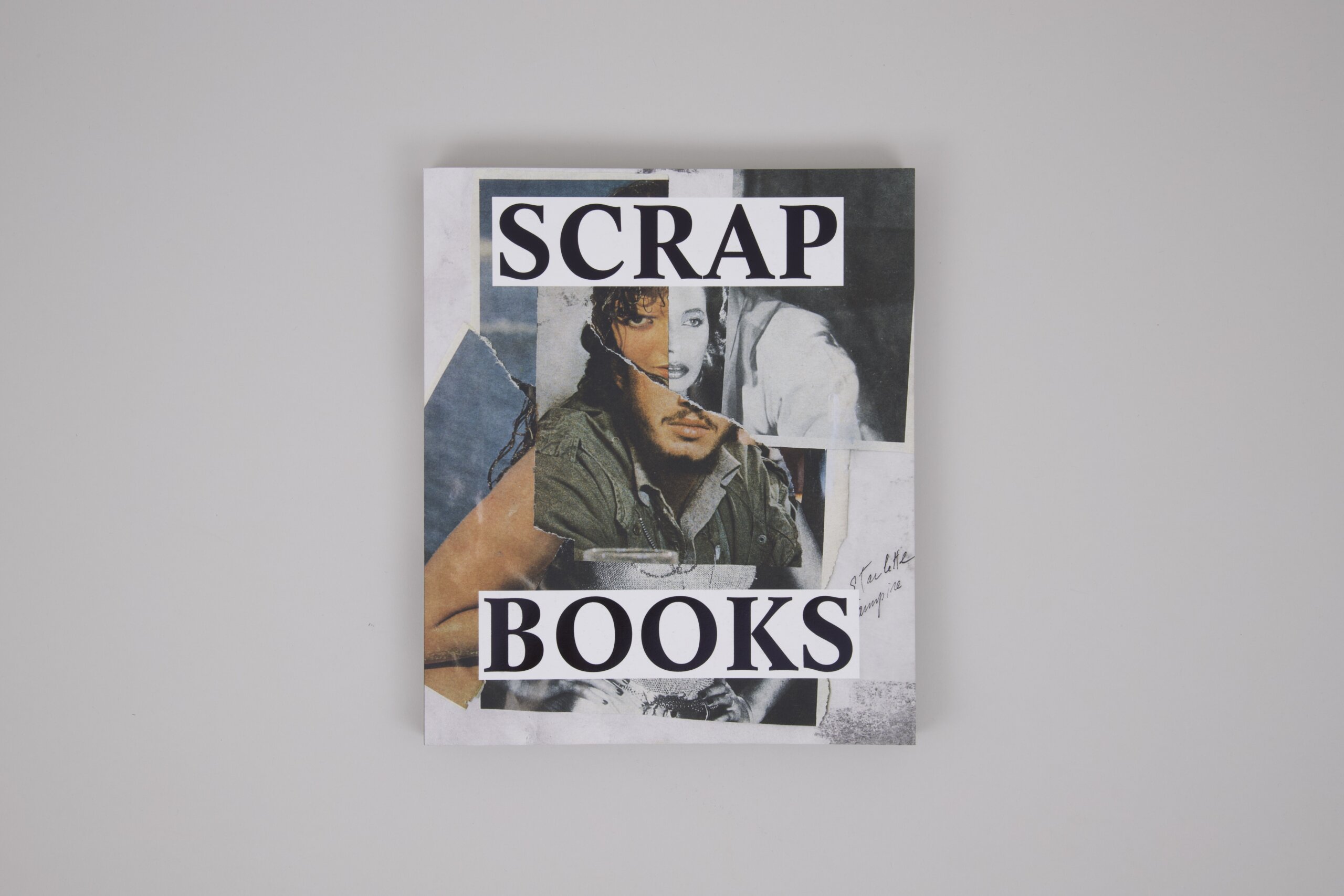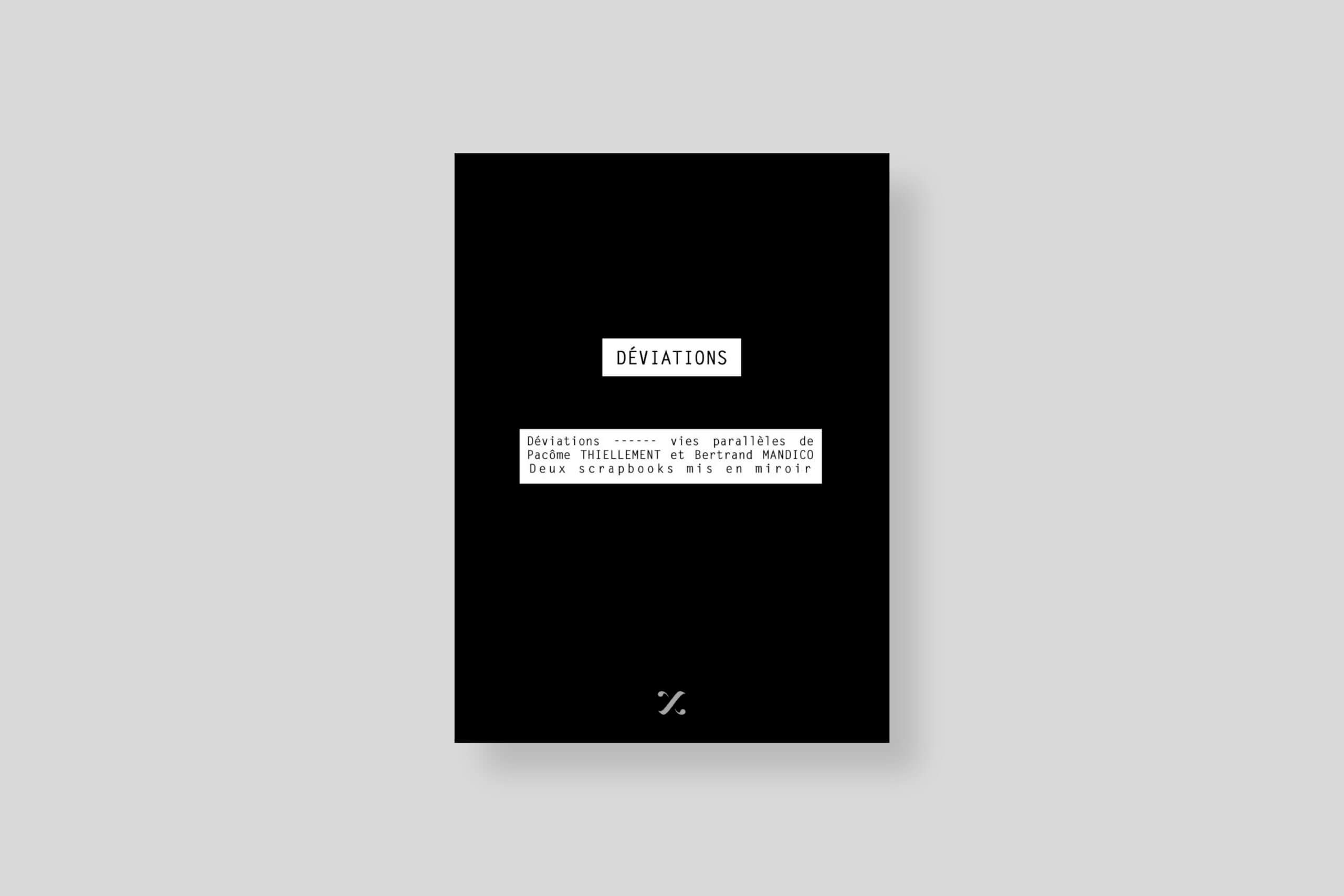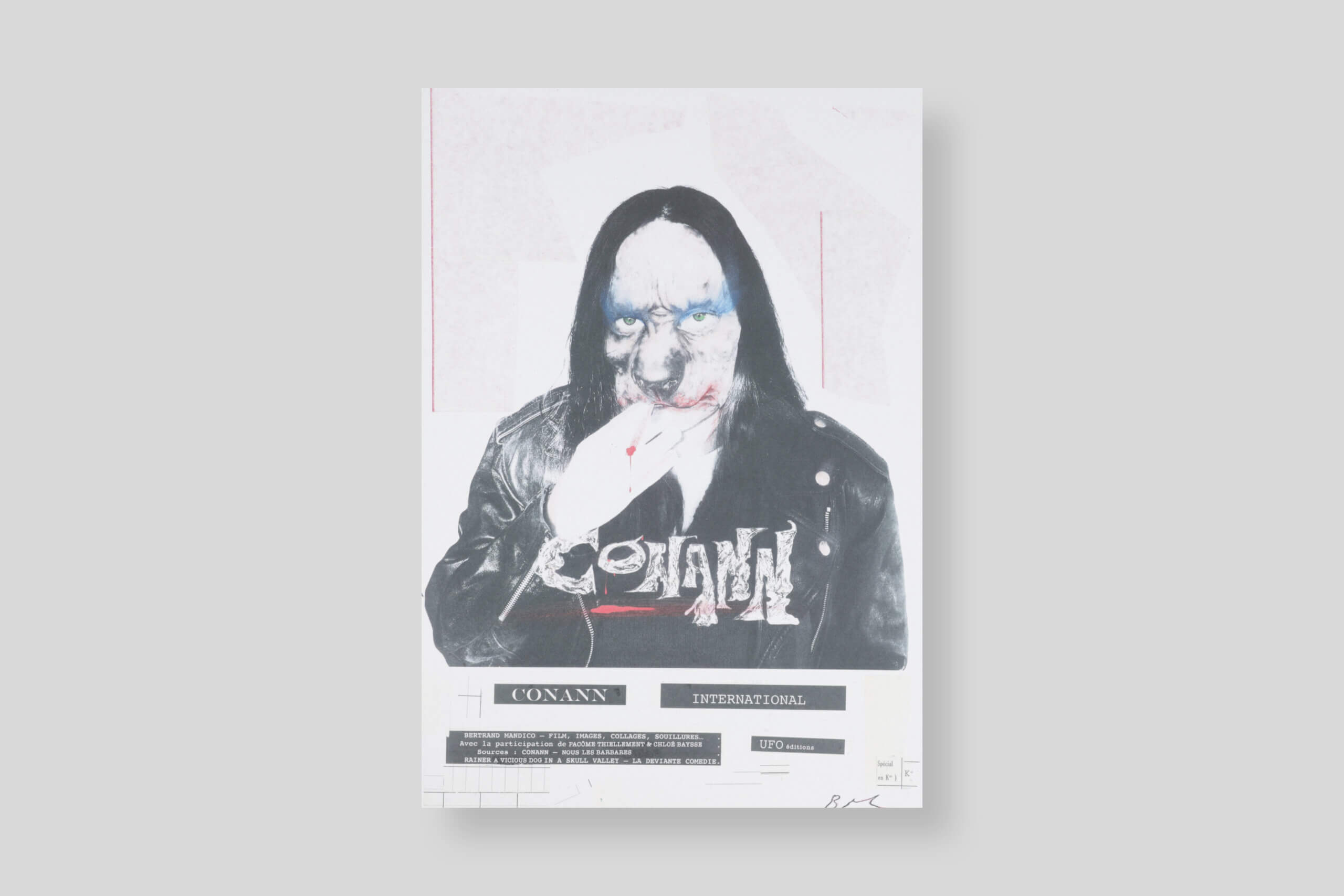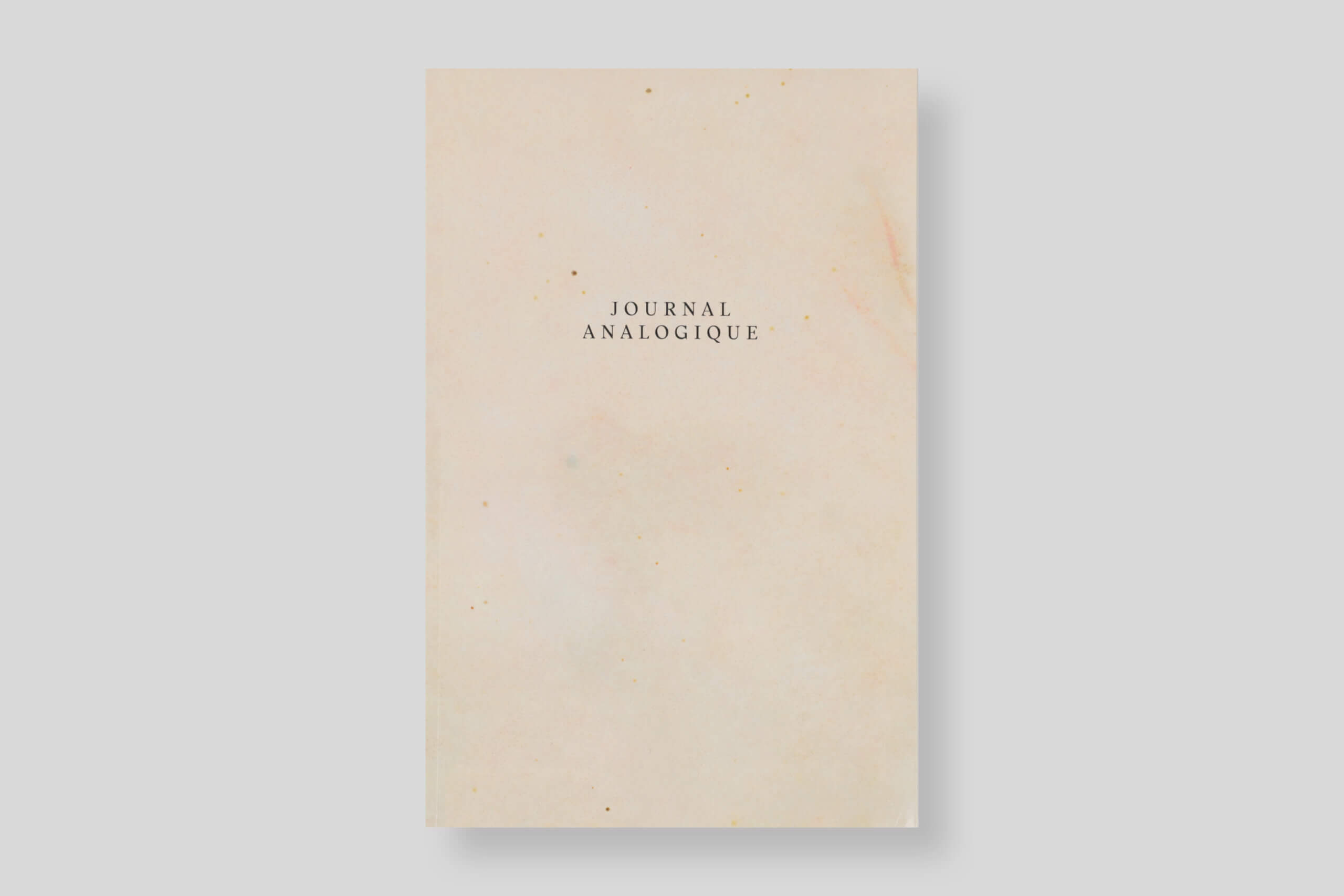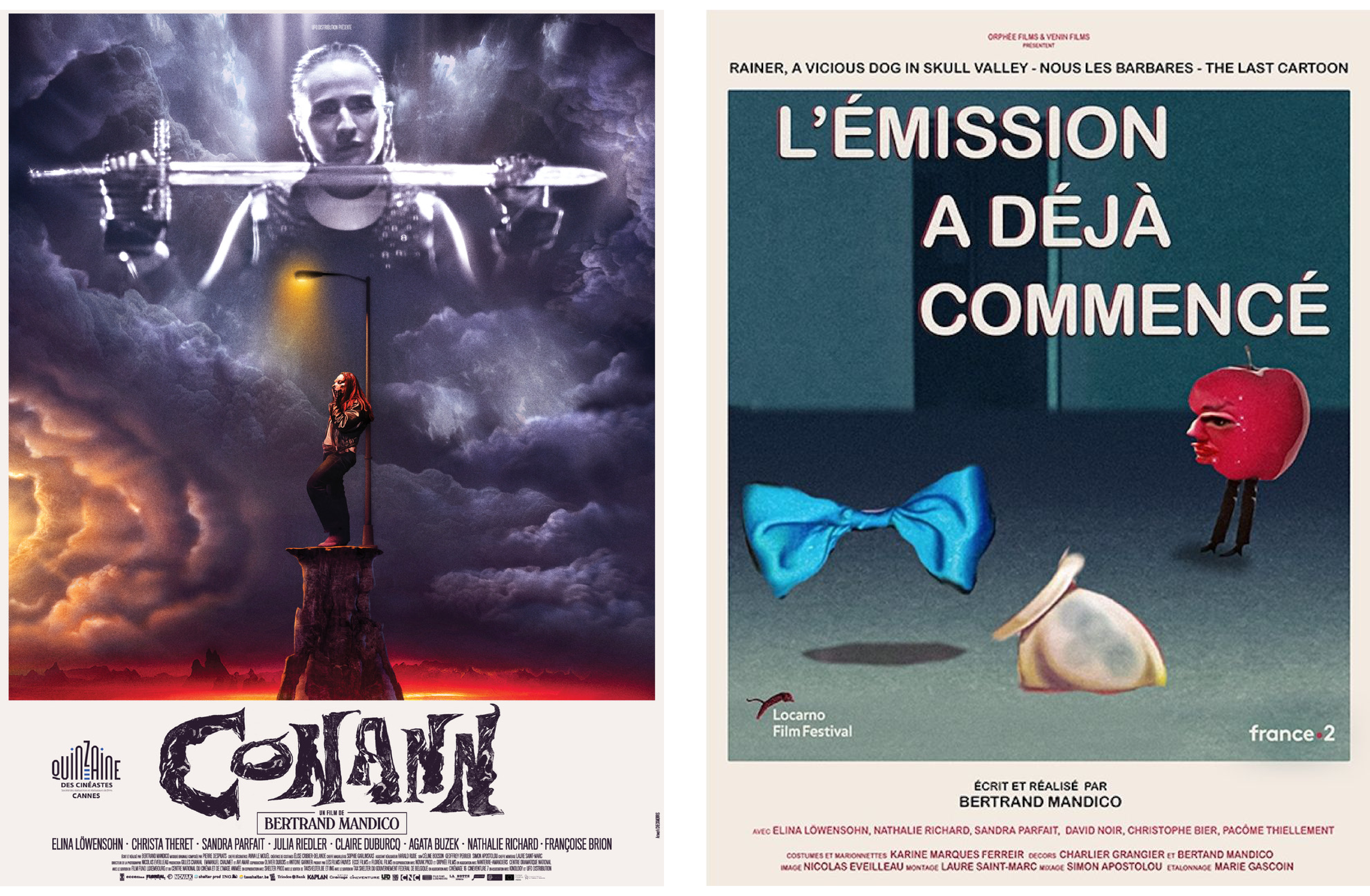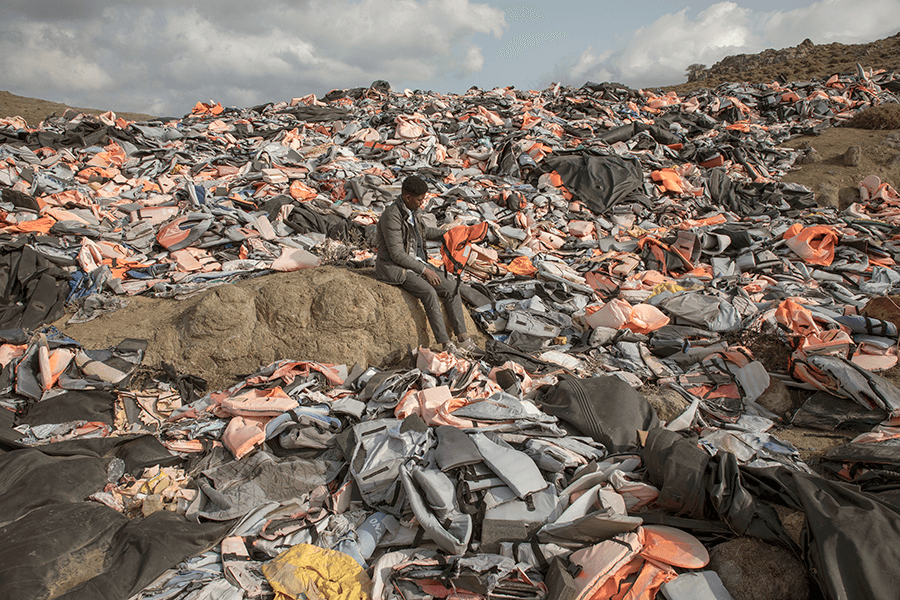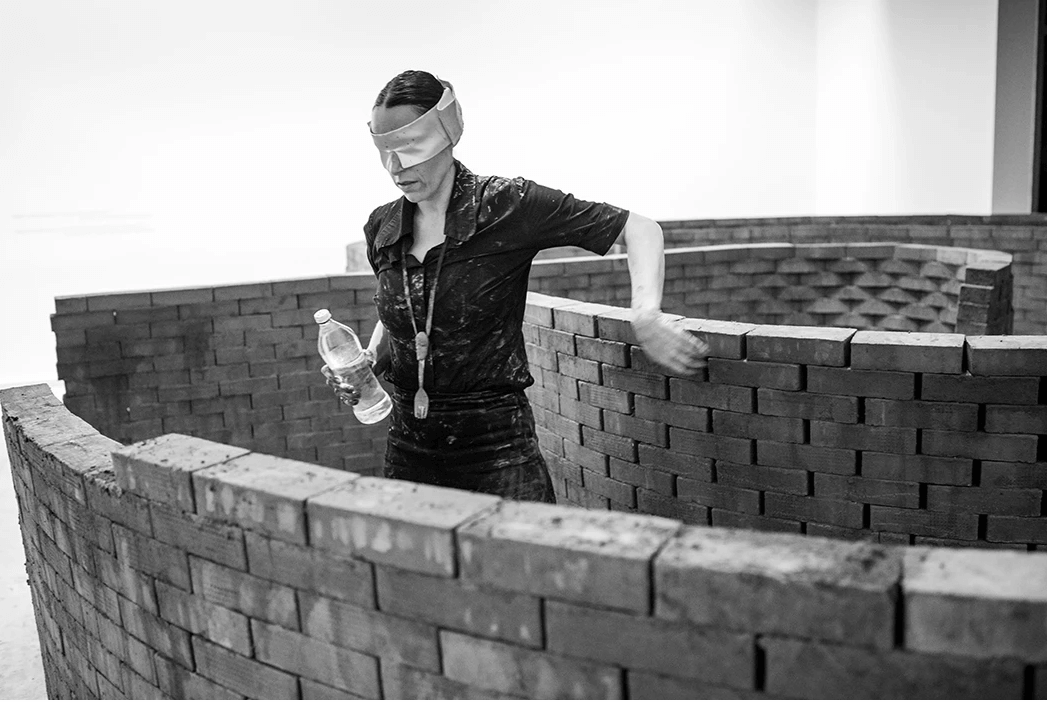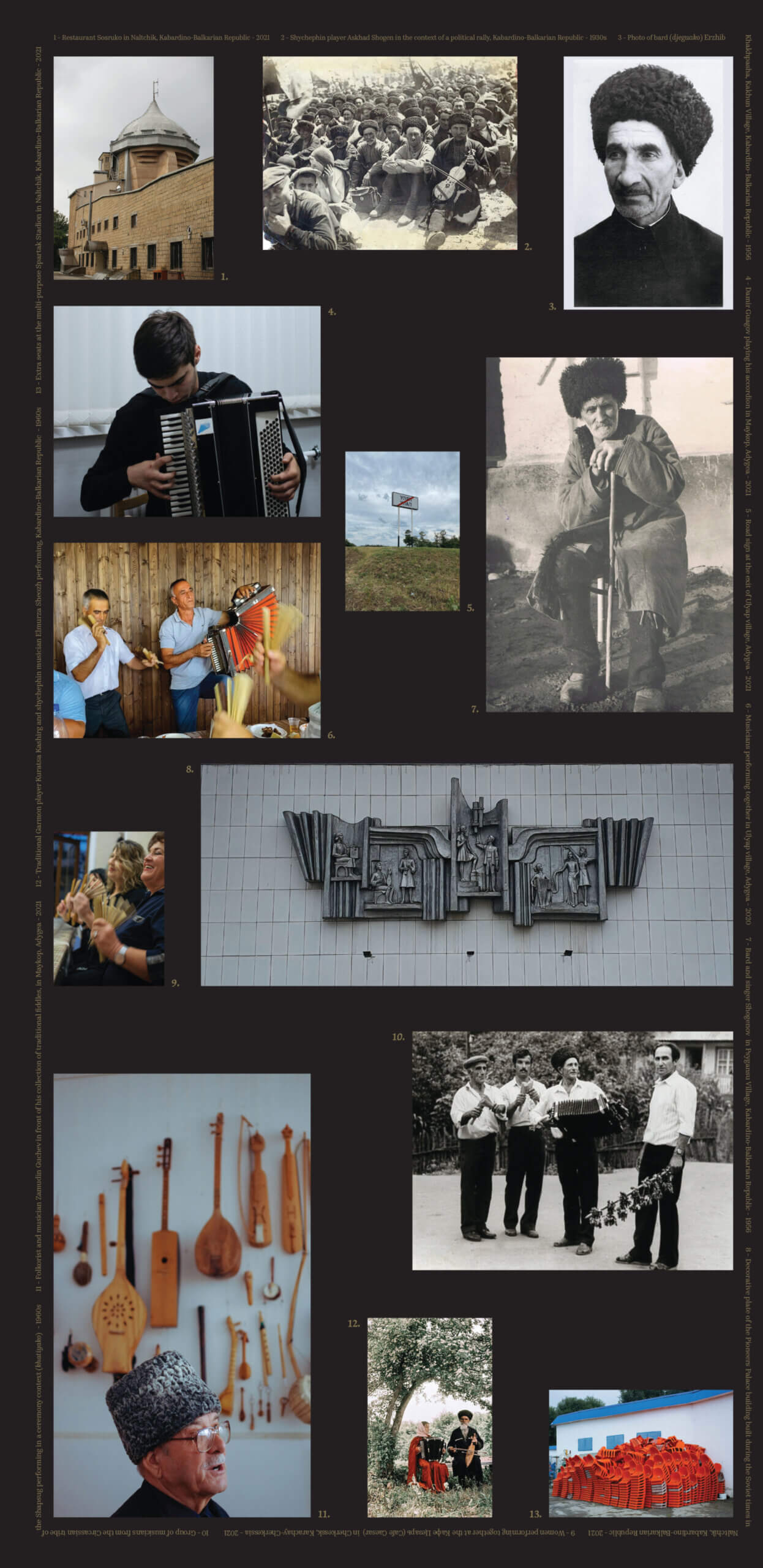Finishing with Christophe Berhault and Matthieu Orléan Saturday 16th March 2024 at 5 PM
delpire & co is delighted to welcome Bertrand Mandico and Christophe Berhault with Scrapbooks, the second part of the exhibition presented at the Rencontres d’Arles 2023, which featured the book of the same name by Matthieu Orléan.
The exhibition will feature 16 collages by Bertrand Mandico based on his film Connan, alongside a series of scrapbooks by Christophe Berhault.
On this occasion, Pacôme Tiellement and Bertrand Mandico will be presenting their new book Déviations, published by Anima.
From the English words scrap and book, the modern scrapbook was born at the beginning of the 20th century with the rise of photography and the acceleration of its reproducibility. It’s a hybrid of diary and photo album, sketchbook and imaginary atlas. Its heterogeneous subject matter derives from subjective associative principles that guide the confrontation of images with different statuses: on bound double pages, photographic prints, press cuttings, prints, maps, film, etc. are cut out, superimposed and manipulated. Fragmented texts, often poetic and sometimes drawn, accompany and subvert these images. Creation is a collision in which the collages are the sparks.
Scrapbooks are emblems of the pre-digital era: the opposite of the dematerialised practices that dominate today, yet which they herald.
Relegated to the back shelves of (low-level) archives, film scrapbooks are by their very nature underground. Fighting against trivialised images, they are utopian works, critical of the usual devices of representation. Marvels of arte povera, they are born of a desire or a doubt, never a commission. With no beginning and no end, these scrapbooks are artistic endeavours miraculously removed from the idea of completion. They question history and myth, intimacy and sex, crises and crimes.
Matthieu Orléan
On this occasion, Pacôme Thiellement and Bertrand Mandico will be presenting their new book Déviations, published by Anima.
Bertrand Mandico (Born in 1977 in Toulouse, France)
Trained at the Gobelins animation school, Bertrand Mandico began imagining his films by drawing. From this apprenticeship in the craft, he retained a taste for baroque sets, which give a unique magnetism to his cinematographic work (made up of dozens of short films and two feature-length films, including After Blue (2021). Mandico doesn’t stage his fantasies: he conjures them up and projects them into reality. The filmmaker always shoots on film, to preserve this tactile encounter with the medium. He prefers the proliferation of matter to computer sequencing. Grain over pixel.
His muse, the actress Elina Löwensohn, embodies this supernatural beauty, and her face haunts the many collages and scrapbooks that the filmmaker has been making since 2010. In what he calls his “diaries of his unconscious”, Mandico reflects on past projects and future disturbances. He interweaves photographs from his films with scraps of vintage film magazines (everything from Superman to Pier Paolo Pasolini, with a predilection for martyred filmmakers), erotic magazines and art books, which he doesn’t hesitate to cut up and sacrifice. Mandico is the apostle of objective chance, in search of accidents and visual clashes that culminate in the addition of hand-painted drawings and words: the gouache highlights complete his shamanic gesture and link cinema forever to an impure alchemical practice.
Dans son court-métrage Huyswoman (2020), un homme grimé, assis sur une chaise au milieu d’un plateau de film fantastique abandonné, regarde la caméra et tourne les pages d’un carnet posé sur ses genoux. C’est le portrait de l’artiste en scrapbooker, définissant son art comme un « coup de couteau dans les côtes ».
Christophe Berhault (Born in 1958 inParis, France)
Painter, draughtsman and video artist Christophe Berhault produces a series of small collage notebooks, culminating in an imposing scrapbook, Journal analogique, produced in just three months in 2007. The artist juxtaposes hundreds of printed images from the international press, both general and pornographic. The artist recycles images of well-known sportsmen and actors (the faces in medallions of Jude Law and Guillaume Canet), but also and above all anonymous people, animals, scenes of war or sex, with a predilection for certain colours (gold and red) and for anything bizarre, even almost unhealthy. In this tortured early twenty-first century, Berhault works from the seething reality of the world, on which he acts like a sort of voodoo revelator.
In the same way that he hunted through thousands of vernacular photographs at the Berlin Flea Market for his film-slideshow 200,000 Paintings (presented here), the support object for his scrapbook is an Atlas dating from the 1920s, found in a Paris dustbin. In it, he created a diary of transgression, governed by the principles of free association, motivated by the sole desire to see the images mate to give birth to monsters, contemporary Gorgons and Hydras covered in blood, topped with severed heads and proud of their turgid sexes. In a way, and almost ‘confusedly’ as he himself puts it, Berhault is denouncing the ultra-violence that became the abusive norm of the press in the 2000s – before uncensored images migrated mainly to the Internet. The intimacy of those who view these images is forever altered.


